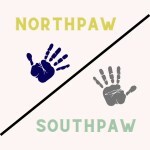A Salute to the Southpaws: Famous Left-Handers in History
Every August 13, the world tips its hat (or maybe its left sleeve) to all the Southpaws out there, on National Left-Handers Day. It’s a playful holiday meant to honor the 10% of the population who do most things with their left hand. That’s right—only one in ten people share this trait, which makes lefties a rare bunch.
Throughout history, left-handers have often been misunderstood. The Latin word sinistra (meaning “left”) also gave us the word sinister. In the Middle Ages, the devil was believed to be left-handed. For centuries, children were scolded or retrained to use their right hand instead. My own father, a lefty, was forced to write with his right hand in school. He grew up in an era where common thought was that left-handedness was a sign of something wrong. Yet, despite the challenges, lefties have left a big mark on the world.
Take the arts, for example. Some of the most celebrated writers put pen to paper with their left hand. Lewis Carroll, the imaginative author of Alice’s Adventures in Wonderland, was a lefty. So was Hans Christian Andersen, whose fairy tales continue to charm children and adults alike. In more recent times, modern authors like Mark Twain (Samuel Clemens) and Kurt Vonnegut also wrote from the left side.
But the list doesn’t stop at the written word. Some of the greatest minds in history were left-handed: Albert Einstein—arguably the poster child for brilliance—was also a lefty. Four of the most recent U.S. presidents were lefties: Ronald Reagan, George H.W. Bush, Bill Clinton, and Barack Obama. Oprah Winfrey, Tom Cruise, Bill Gates and Prince William are also left-handed.

I (myself a leftie) have touted the mugs and the t-shirts over the years – the ones with pithy sayings like, “Left-handed people are always right,” and “Everyone is born right-handed. Only a few overcome it.” My favorite saying just might be, “Here’s to showing those scissors in elementary school who’s boss.”
Studies about the differences in brain activity between right-handed and left-handed people are all over the place. In 2019, scientists identified DNA differences between lefties and righties. Recently, a large study in the U.K. linked regions of the brain connected to handedness with personality types more prone to mood swings and anxiety. And left-handed people use the right side of their brain more – the hemisphere associated with creativity, music and imagination.
Speaking of creative, Paul McCartney played his guitar left-handed, flipping the instrument upside down in his early days before finding a proper lefty model. Leonardo da Vinci painted, sketched, and scribbled notebooks backwards, forcing readers to hold his journals up to a mirror to decode his genius.
In August, we celebrate the lefties. Being left-handed is a trait I’ve always been proud of – especially because it’s a trait I share with my dad – and both of my kids. In a world where only 10 percent of the population is left-handed, my family unit has always skewed the statistics. I have never been a part of a household where the righties dominated. My mom was the sole righty of the family as I was growing up; now, in my family of four (myself, my husband and two sons) still only one (my husband) is right-handed.

How do you like those genes?!
While historically left-handers may be the minority, they’ve never been short on impact. So, in the spirit of National Left-Handers Day, here’s to the lefties—may your smudged ink, quirky scissors, and backward spiral notebooks never slow you down. We are a unique – and wonderfully creative – force. The world wouldn’t be the same without us!
The post A Salute to the Southpaws: Famous Left-Handers in History appeared first on Kate Meadows Writing & Editing.



